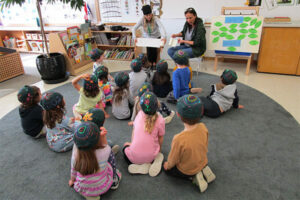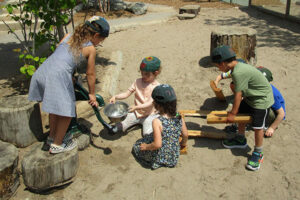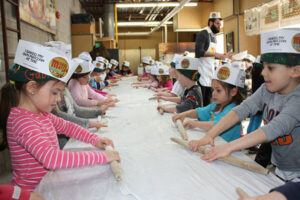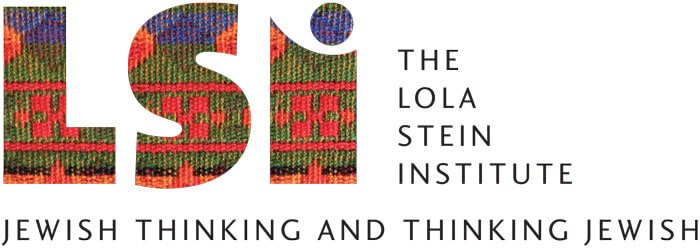- How We Teach

- First Column
- Second Column
- Third Column
- Case Studies

- First Column
- Second Column
- Culture & Community

- First Column
- Second Column
- News & Views

- Admissions

- First Column
- Second Column
- Support Us

- About

- First Column
- Second Column
- Parent Hub
- Attend an Open House
- Take a Tour
- Donate Now
- Calendar
- Blog
- 416-635-1876
- Search
Life Lessons and the Art of Portraiture
Like many people, I have always been fascinated by old family photographs. I love looking at familiar faces in those black-and-white photos, trying to see myself. These images of mostly small moments, frozen in time, repeat their stories each time I look at them. Sometimes they joyfully reveal something new that I missed the last time I looked, and sometimes they quietly bring forward an ache of memory, with its persistent insistence of absence. The images are always meaningful, but each time I look, the meanings aren’t always the same.
On one hand, to anyone who has ever looked nostalgically at an old photo, it seems obvious to say that the way we find meaning these images depends on the narratives and perspectives that we, the viewers, bring to an image at any given time. Consider though, the broader implications of that statement. If the meaning of an image is created inside the viewer, as something dynamic and transient and not inherent or fixed in the image itself, then how is it possible for artist to create anything meaningful at all? After all, isn’t it the artist who is making a statement through the use of chosen artistic forms and materials?
Such complex questions about the “location” of meaning in art are among the most challenging and interesting questions that have been asked ever since drawings first appeared on cave wall s 60,0 years ago. These questions are the driving force behind the discourse of the postmodern era. At Toronto Heschel, we pose essential questions like these to our students and to ourselves as teachers. We ask students to consider these dilemmas as their understanding of a particular idea evolves.
Is artistic practice essentially an inward-looking reflective process or do artists look to create meaning through mimicry of outward forms? Reframed pedagogically, should we ask students to paint what they feel or what they see? As is often the case in matters of the post-modern, the answer is…it depends.
In Senior Kindergarten, there is significant value in teaching students to start their lives as artists by painting what they see. The young students learn to draw their own faces as they look carefully at their reflections in small mirrors. Examining their faces closely, they learn formal design elements such as line, colour, texture, shape, symmetry, and scale. They also learn about expression and meaning, as they observe how subtle changes in outward facial expressions speak about their inner feelings.
Even at a young age, drawing the face raises telling questions about difference. What makes us look different from one another? Do these differences matter? What is common in every face? How are we all like one another?
We approach these early questions with artistic practices that are “outward looking”; the artist looks out into the world and observes, records, and communicates what he/she sees. These foundational explorations give the children important tools for decoding complex non-verbal cues as they take their first steps to become empathetic understanding observers of the world.
Much as our own thoughts and feelings about old photographs change as time passes, our pedagogical approaches to portraiture evolve as our students’ progress though their years at Heschel. In Grade 8, students study the “rise of the individual” and wonder about the motives and meaning behind great works of art, such as Leonardo da Vinci’s Mona Lisa, a painting famously obtuse in its subject’s out- ward expression. Students also study important human rights activists and create portraits of them, which gives them a chance to wonder what is going on behind their eyes, too.
The students also draw self-portraits and compare their images to those of the human rights activists they have painted. The focus of this exercise is on the elements of artistic practice that are inward looking and reflective. The juxtaposition of the students’ own face and the faces of the well-known changemakers invites questions to go deeper than the external observation and mimicry of outward appearances. When we ask students to wonder about the similarities and differences between themselves and the activists, we are not asking about physical traits. Rather, we are nudging our students to look beyond the image and see the human attributes that may have compelled these activists to act with such conviction and passion.
The amazing thing about portraiture as an art form is that, at its best, it is simultaneously a celebration of the uniqueness of its subject and an obliteration of the notion of individuality. Portraits are thought-provoking. They open up interesting areas of ambiguity, and they pose tough questions about difference and sameness.
These very questions are so important for students in early adolescence. As they come of age in our tradition, they are already working through the subtle process of figuring out who they want to be.
Toronto Heschel, we integrate this kind of important generative expansive theme across the curriculum. In language arts class, students address the theme of individuality through literary character studies; in science, they study the reason and timelines for the emergence of human diversity; and, in art class, they use portraits.
At the end of it all, we wonder…does the art of the portrait help us to see the uniqueness of each person, or does it allow us to recognize what is common to us all? As with other challenging questions, we find compelling answers in Jewish texts. In this passage from the Babylonian Talmud, Tractate Sanhedrin 38a, students are taught to consider the wonder of diversity:
When a coin maker mints many coins from one mould, they are all alike. Their identical appearance makes their value equal. In comparison, when God fashioned all people from the one mould of the first person, not one resembles the other, they all have the same value.
When we look carefully at each other, when we notice and accept each other’s differences on the outside, then we can strive to see the common worth on the inside. This is what we encourage from Senior Kindergarten through Grade 8.
Daniel Abramson is an artist, photographer and teacher. At the Toronto Heschel School, his classes include Junior High science and art.
PREVIOUS ARTICLE
Beyond Social Media ActivismNEXT ARTICLE
The Fringe Benefits of Volunteering at SchoolSpecial Feature
Democracy and Justice in the Junior High ClassroomBeyond Social Media ActivismOur Sages Tell Us
Cultivating Kindness at Home and at SchoolSaving and Sharing All Day LongColumns
Perspectives
 The Lola Stein Institute (LSI) is a centre of inventive educational thinking and addresses the challenge to re-frame schooling for the exigencies of our times.
The Lola Stein Institute (LSI) is a centre of inventive educational thinking and addresses the challenge to re-frame schooling for the exigencies of our times.









